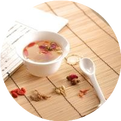
1. Tremella and Red Date Soup
Tremella, also known as “poor man’s bird’s nest,” is similar to bird’s nest in color, texture, and benefits, but is much more affordable. While bird’s nest is nourishing, it can easily cause internal heat. Tremella is cooling and helps to moisten dryness. Dryness and heat can be acute or chronic; heat can come quickly and leave just as fast. However, if heat lingers too long, it can turn into dryness. Therefore, consuming tremella is most effective. Cook tremella with dried longan, goji berries, and red dates. Tremella and red date soup is not only a delicious treat for breast enhancement but also helps to give your complexion a rosy glow and keeps your body light and slim.

2. Black Glutinous Rice Blood Nourishing Porridge
Black glutinous rice, longan, and red dates are well-known for their blood-nourishing properties. When combined with the highly nutritious yam, the effects of tonifying qi and nourishing blood are even more pronounced. Remember to drink this every month! Haha! Use black glutinous rice, red dates, longan, yam, and brown sugar. A small reminder: while longan can nourish blood and qi and promote blood circulation, it is not easily digestible, so try to use about 7-8 pieces each time (for those with a cold stomach, you can add 2 slices of red ginseng).
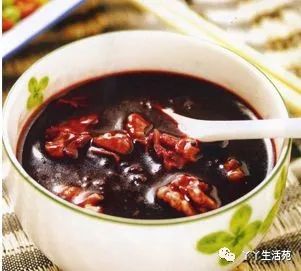
3. Angelica and Red Date Pork Ribs
This dish treats skin dryness and roughness during seasonal changes, as well as skin itching. Use one rib, goji berries, 12 red dates, and 4 slices of angelica. Blanch the ribs, clean them, and place them in a clay pot with goji berries, red dates, angelica, scallions, and ginger slices. Bring to a boil over high heat, then simmer until the ribs are tender. Season with salt and chicken essence. The combination of these ingredients helps to nourish yin, moisten dryness, and support skin health.
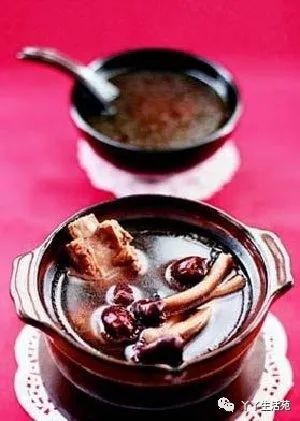
4. Nourishing Oatmeal Porridge I suddenly remember a saying from a beautiful woman: “Women should always cherish themselves!” It’s already good if you can remember to cherish yourself from time to time. Haha! Soak walnuts, red dates, and dried longan. Clean the oats and put them in a rice cooker with an appropriate amount of water, and start cooking! Remember to keep an eye on the time! When the porridge boils, switch to the porridge setting! Before serving, add some brown sugar.
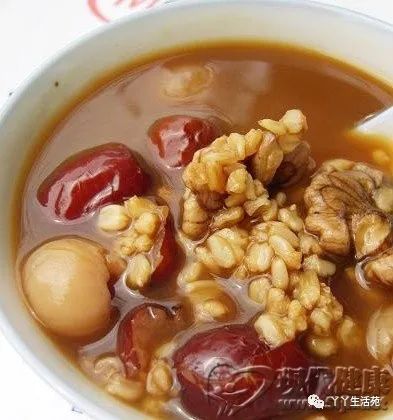
5. Double Red Blood Nourishing Soup
Use 500 grams of sweet potato, 10 grams of red dates, and an appropriate amount of brown sugar. Add 2000 milliliters of water and bring to a boil. Add the brown sugar only after the sweet potato is cooked. This is a dessert often eaten in summer, and those who like pumpkin can substitute sweet potato with pumpkin.
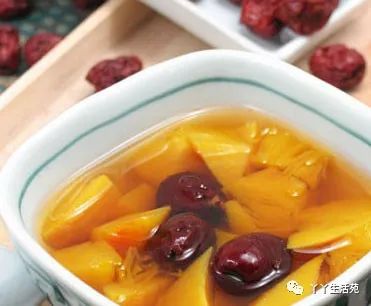
6. Nourishing Papaya and Tremella Soup Use tremella, papaya, red dates, and rock sugar. Boil the soaked tremella, add red dates, and simmer on low heat for half an hour. Then add rock sugar and papaya, bring to a boil, and it’s ready to serve.
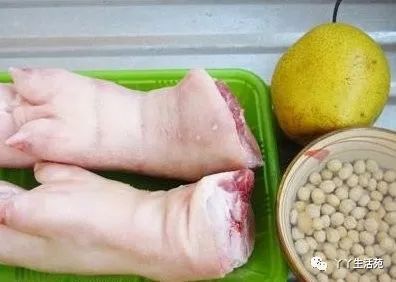
7. Soybean, Snow Pear, and Pig’s Foot Soup
Drinking pear soup is beneficial for women. Pears have been praised as the “king of fruits” since ancient times. Using snow pears to make soup can help relieve cough, moisten the lungs, and beautify the skin. Drinking this snow pear, soybean, and pig’s foot soup can significantly improve skin smoothness and relieve dryness and hoarseness, lower blood pressure, and nourish heat-clearing properties. Use one snow pear, 50 grams of soybeans, half a pig’s foot, 3 slices of ginger, and salt. Blanch the pig’s foot with ginger to remove the odor, cut it into pieces; add the pitted and chopped snow pear, soybeans, and a piece of ginger, and add enough water to boil. Maintain a vigorous boil for 15 minutes, then simmer for another hour. The soup is ready, and you can add salt to taste before drinking.
When it comes to qi and blood, many people find it mysterious. Traditional Chinese Medicine (TCM) believes that a person’s health standard is sufficient qi and blood. The organs in the human body are like people; when they are well-fed, they have the energy to work. Blood is the “food” for the organs.
1. Observe the Eyes:Observing the eyes actually means looking at the color of the sclera. The saying goes, “As people age, the whites of their eyes turn yellow,” which refers to the sclera becoming cloudy, yellow, or having blood vessels, indicating insufficient qi and blood. Bright, wide-open eyes indicate sufficient qi and blood; conversely, large eye bags, dry eyes, and heavy eyelids all represent insufficient qi and blood.
2. Observe the Skin:Skin that is white with a pink hue, has luster, elasticity, and is free of wrinkles and spots indicates sufficient qi and blood. Conversely, rough, dull, dark, yellow, pale, blue, red skin with spots indicates poor health and insufficient qi and blood.
3. Observe the Hair:Shiny, thick, and smooth hair indicates sufficient qi and blood, while dry, falling, yellowing, graying, or split ends indicate insufficient qi and blood.
4. Observe the Ears:Nowadays, people’s physical quality is declining. Just take a close look; people’s ears are getting smaller, appearing stiffer, and their shapes are becoming deformed. Even children and young people rarely have round, plump, and full ears, which were common in the elderly, indicating that the physical quality of people in the past was significantly better than that of modern people.
For children, ear shape is important, while for adults, besides shape, the focus is on the acquired condition, mainly looking at color, spots, and pain.If the ears are a light pink color, shiny, without spots, wrinkles, and plump, it indicates sufficient qi and blood. Dull, lifeless ears indicate a decline in qi and blood. If the ears are shriveled, dry, have spots, and many wrinkles, it indicates that kidney function is beginning to decline, and you need to pay attention.
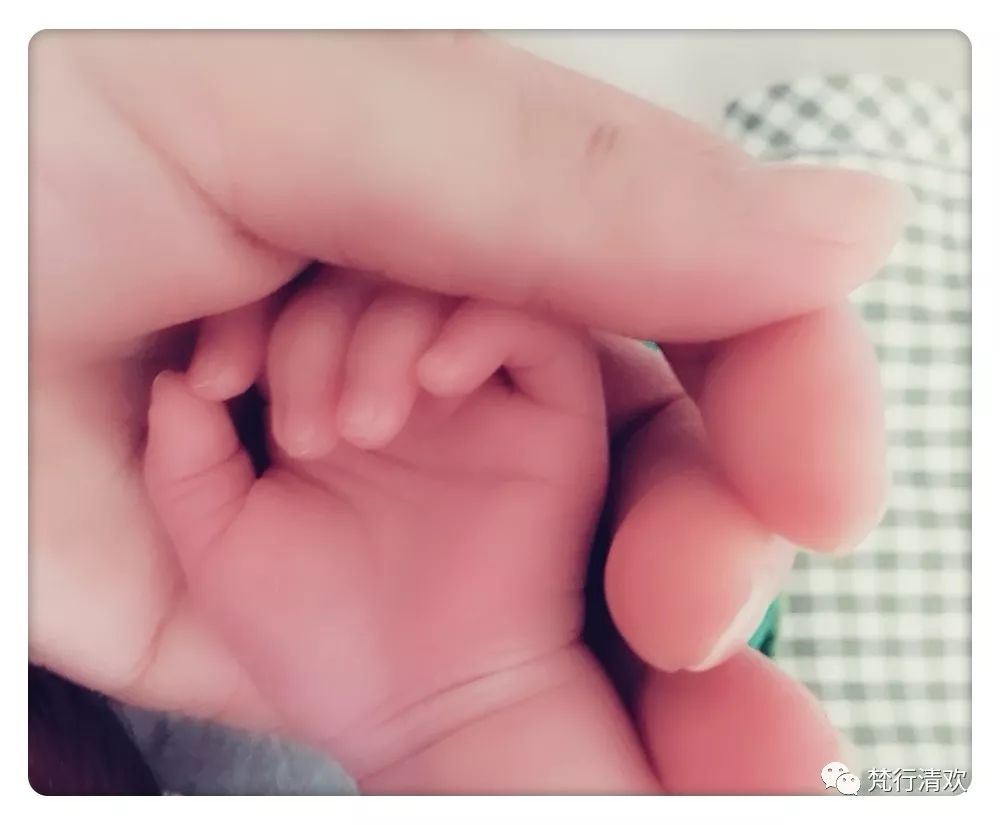
5. Feel the Temperature of the Hands:If the hands are warm all year round, it indicates sufficient qi and blood. If the palms are hot, sweaty, or cold, it indicates insufficient qi and blood.
6. Observe the Finger Pads:Whether in children or adults, if the finger pads are flat, weak, or the fingertips are thin, it indicates insufficient qi and blood, while plump, fleshy, and elastic finger pads indicate sufficient qi and blood.
7. Observe the Veins:If you see veins on an adult’s index finger, it indicates poor digestive function in childhood, and this condition has continued into adulthood.This type of person has a weak constitution, with both qi and blood deficiency. If you see veins on the little finger, it indicates insufficient kidney qi. If there are many deep lines near the wrist on the palm, it indicates poor nutrition and weak constitution in childhood, leading to insufficient qi and blood. Women with this condition are prone to gynecological diseases, while men are prone to prostate enlargement and gout.
8. Observe the Half-Moon Shape on the Nails:Under normal circumstances, the half-moon shape should be present on all fingers except the little finger.On the thumb, the half-moon should occupy 1/4 to 1/5 of the nail area, while the other fingers should not exceed 1/5. If there is no half-moon shape on the fingers or only on the thumb, it indicates heavy internal cold, poor circulation, and insufficient qi and blood, preventing blood from reaching the tips of the fingers. If the half-moon shape is too large or too many, it may lead to hyperthyroidism, high blood pressure, and other diseases.
9. Observe the Vertical Lines on the Nails:This only appears on adult hands and not on children.When vertical lines appear on adult nails, it is a warning sign indicating qi and blood deficiency and overdrawn energy, a sign of bodily aging.
10. Observe the Gums:This is not obvious in children, mainly in adults.Gum recession indicates insufficient qi and blood. If you notice that the gaps between your teeth are getting larger and food is getting stuck more easily, pay attention; your body is on a downward slope, and aging is accelerating.
11. Observe Sleep:If adults fall asleep quickly like children, sleep deeply, breathe evenly, and wake up naturally, it indicates sufficient qi and blood; while difficulty falling asleep, easily startled, frequent nighttime urination, heavy breathing, or snoring indicate blood deficiency.
12. Observe Exercise:If you experience chest tightness, shortness of breath, and fatigue that is hard to recover from during exercise, it indicates insufficient qi and blood, while those who feel energetic and relaxed after exercise are in good condition.
What is the fastest way to nourish blood?The method to nourish blood is to consume various nutritious meat broths and porridge made from black rice, corn, blood glutinous rice, and white rice, along with processed pastes of red dates, walnuts, peanuts, lotus seeds, longan, and goji berries.Therefore, those recovering from illness, postpartum women, the elderly, children, and those with weak constitutions should drink various broths made from well-cooked beef, lamb, pig liver, chicken, bone marrow, and tendon soup, and consume easily digestible pastes, which are particularly beneficial for health and disease treatment.
What are the best foods for nourishing blood?Simply put, any food that can be digested and absorbed is blood-nourishing. Therefore, the premise for nourishing blood is the digestive ability of the stomach and intestines. Even if you eat simple meals, as long as they are fully absorbed, they can nourish blood. However, if you consume high-quality tonics that are not digested by the stomach and intestines, they will be of no use.In general, high-quality animal proteins such as meat, eggs, and fish can significantly improve blood quality, making it easier for people to have strong immunity and abundant energy.
Are all cold foods harmful?Not all cold foods have negative effects on the body. As long as they match a person’s constitution and the season, they can have a balancing effect.For example, in summer, when the body sweats a lot, eating some cold watermelon in moderation can help eliminate heat and replenish the water and sugar lost due to sweating. In this case, watermelon can play a role in balancing and nourishing blood. However, eating watermelon in cold weather can lead to blood deficiency. Cold and hot foods should be eaten in combination; for instance, when eating very cold crabs, they should be paired with warm ginger to neutralize the coldness, which will not harm the body and will aid in the digestion and absorption of crab meat.
Are black foods kidney-nourishing foods?We often see promotions claiming that black foods nourish the kidneys and blood, such as black sesame, black beans, black rice, black fungus, kelp, nori, and black-boned chicken.However, this is not entirely true. Warm foods nourish, while cold foods drain. Black rice and black-boned chicken are warm and have significant blood and kidney-nourishing effects; black sesame is neutral, nourishing the kidneys and liver, moistening the intestines, and promoting hair growth; black beans are neutral, nourishing the kidneys, invigorating blood, and detoxifying; while black fungus is cool, and kelp and nori are cold, which can be eaten frequently in summer but should be avoided in winter. The nourishing or draining properties of any food depend on its attributes. Neutral and warm foods can benefit the body throughout the year, while cool and cold foods should be avoided in all seasons except summer. If you must eat them, they should be paired with warm ginger, chili, or pepper to ensure you can absorb the unique nutrients of these foods without harming the kidneys or stomach.
Beloved Family Blood Nourishing RecipesIn daily meals, there are many blood-nourishing recipes. Interested friends can follow the methods introduced below to make them, or change them up to make them more appealing to family members.Red dates, longan, peanuts, red beans, brown sugar, ginkgo, and goji berries are commonly consumed blood-nourishing and kidney-nourishing foods. Combining them creates excellent blood-nourishing recipes. Red dates are the most commonly used food for nourishing blood, and eating them raw or soaking them in wine yields the best results. Red dates can also be stir-fried in an iron pot until blackened and then soaked in water to drink, which can treat stomach cold and pain. Adding longan makes a tea that nourishes blood and qi, especially suitable for teachers and salespeople who frequently use their voices. If you add 4-6 goji berries, it can also help treat constipation, but those with loose stools should avoid adding goji berries. Women who regularly drink red date, longan, and goji berry tea will have fair skin and good beauty effects. Use only a few goji berries, and 6-8 red dates and longan will suffice. Brew a cup for yourself every morning after work; it not only nourishes qi and blood but also improves eyesight, especially suitable for workaholics who spend long hours in front of a computer. Drinking unroasted red dates in tea is ineffective because the skin wraps around the dates, preventing the nutrients from being released. However, after roasting, the red dates will crack open when soaked in hot water, allowing the nutrients to seep out gradually. Red dates, peanuts, longan, and brown sugar can be simmered together in water until soft; consuming this regularly has excellent blood-nourishing effects. Red dates and red beans can be cooked together with glutinous rice to make porridge. Red beans are harder to cook, so boil them first until soft, then add glutinous rice and red dates to cook together, which is also a delicious blood-nourishing dish.

